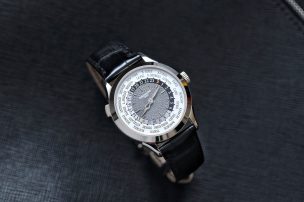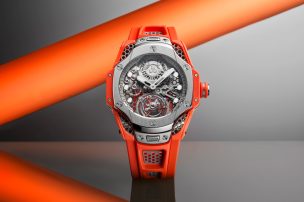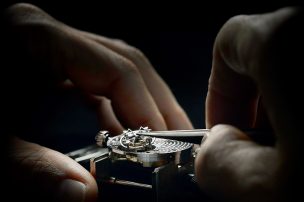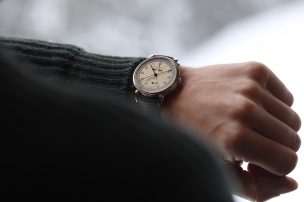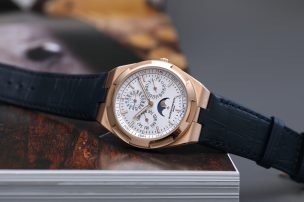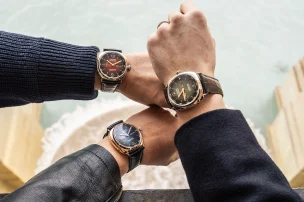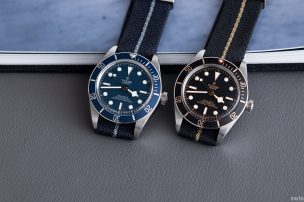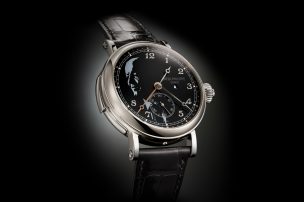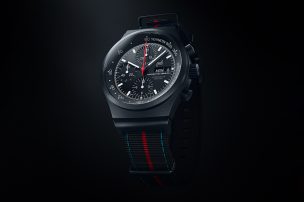
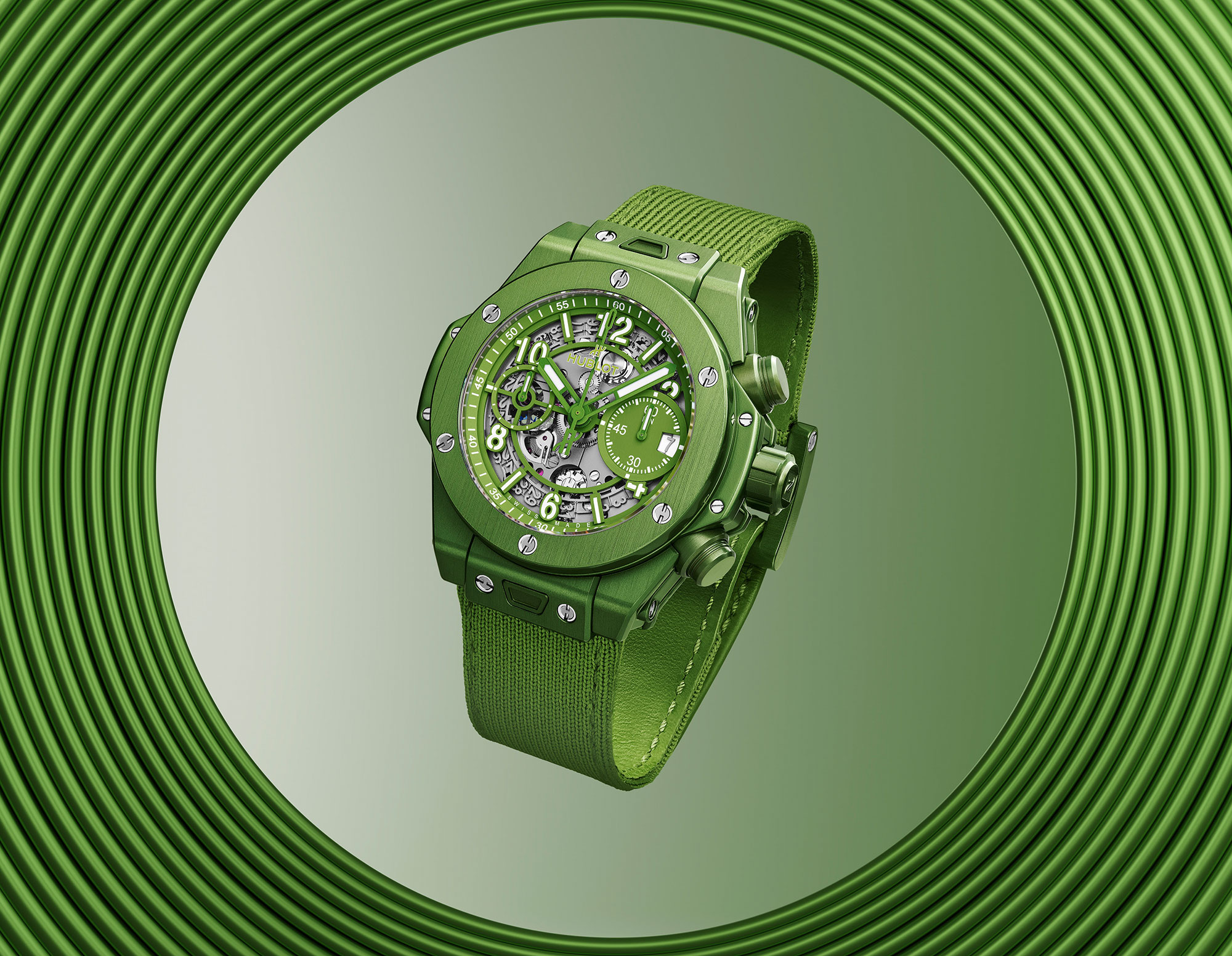
Taste the Difference: The Hublot Big Bang Unico Nespresso Origin
In this tale of passion, shared values, and the pursuit of perfection, our greatest loves come together: coffee and watchmaking. Editor Catherine Bishop paid a visit to the Hublot and Nespresso manufactures in Switzerland to meet with the respective brands’ CEOs and uncover the story behind this year’s most unexpected collaboration: the Hublot Big Bang Unico Nespresso Origin.
The birth of European coffee culture
If I couldn’t, three times a day,
be allowed to drink my little cup of coffee,
in my anguish I will turn into
a shrivelled-up roast goat.
These wise – if unorthodox – words composed by J.S Bach for his ‘Coffee Cantata’ in circa 1735 no doubt ring surprisingly true with many of us today. Thank goodness, then, for Nespresso, which provides us coffee addicts with a quick and easy caffeine fix throughout the fast-paced days that so define the modern age.

Coffee: a man’s best friend?
According to legend, the first coffee was brewed by an Ethiopian goat herder around 800 AD.
Credit © Nathan Dumlao
Once upon a time, coffee wasn’t a necessity to be hurriedly consumed. Across late 17th- and 18th-century Europe, the act of drinking coffee far transcended a visit to today’s hipster urban roasteries, and certainly outclassed quick-fix institutions like Starbucks. Rather, coffee houses were vibrant, amazingly diverse communal establishments that – unlike alcohol-filled taverns – were ‘a catalyst for pure thought, sophistication and wit’ throughout society. Thanks to the cheap prices of coffee beans, these egalitarian and sociable institutions offered a people across the public sphere a concrete location to converse. Various coffee houses held associations with certain topics or professions. For example, ‘Tom’s Coffee-house’, located in the financial district of the City of London, was frequented by the city’s insurers and bankers. By contrast, the notorious ‘Moll King’s’ coffee house in Covent Garden provided a place for its guests to browse a directory of prostitutes.
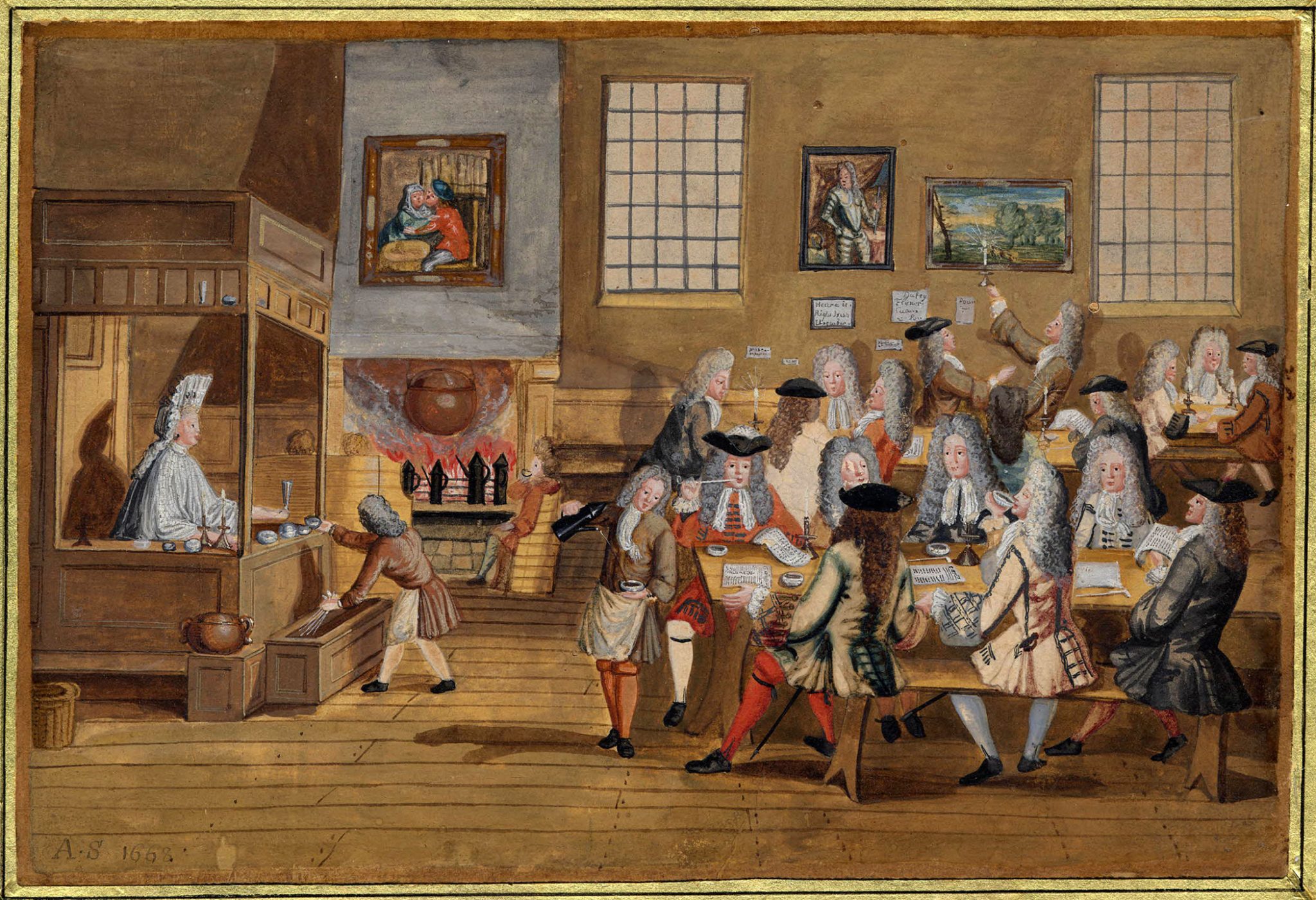
A bustling late 17th century coffee house; note the periodicals on the tables.
Credit © Trustees of the British Museum
Coffee houses during the Enlightenment, also known as the ‘Age of Reason’, instigated a new social climate, with the aristocracy moving to converse with the bourgeoisie for the first time. This was in large part thanks to the increasing distribution of periodicals at coffee houses, from The Tatler to The Spectator. Diverse, lively, political; coffee stimulated society to think, debate, and educate itself like never before.

Periodicals encouraged lively political and social discourse at coffee houses.
Credit © Historic UK
Over the years, however, the social and political power of the coffee-house scene began to fade. The days of lively social and political discourse are largely gone. While we 21st-century caffeine-lovers still meet in the sunshine to indulge in some tête-à-tête over a cappuccino, even the Italians treat coffee as a quick morning pitstop to be taken standing up. For the most part, times have changed.
Moving with the times
Of course, the world of watches has changed too. Once upon a time in the 19th century, as I learned on a recent trip to the Patek Philippe museum, checking the time was even considered an insult to one’s companions. This resulted in the use of ‘quarter-minute pocket watches’, which would chime out the time, thus avoiding the need to pull out a watch and check. Yet, as the years progressed, pocket watches transformed into the ultimate symbol and vital possession of every refined gentleman, elegantly hanging from a gold chain and highly decorated.
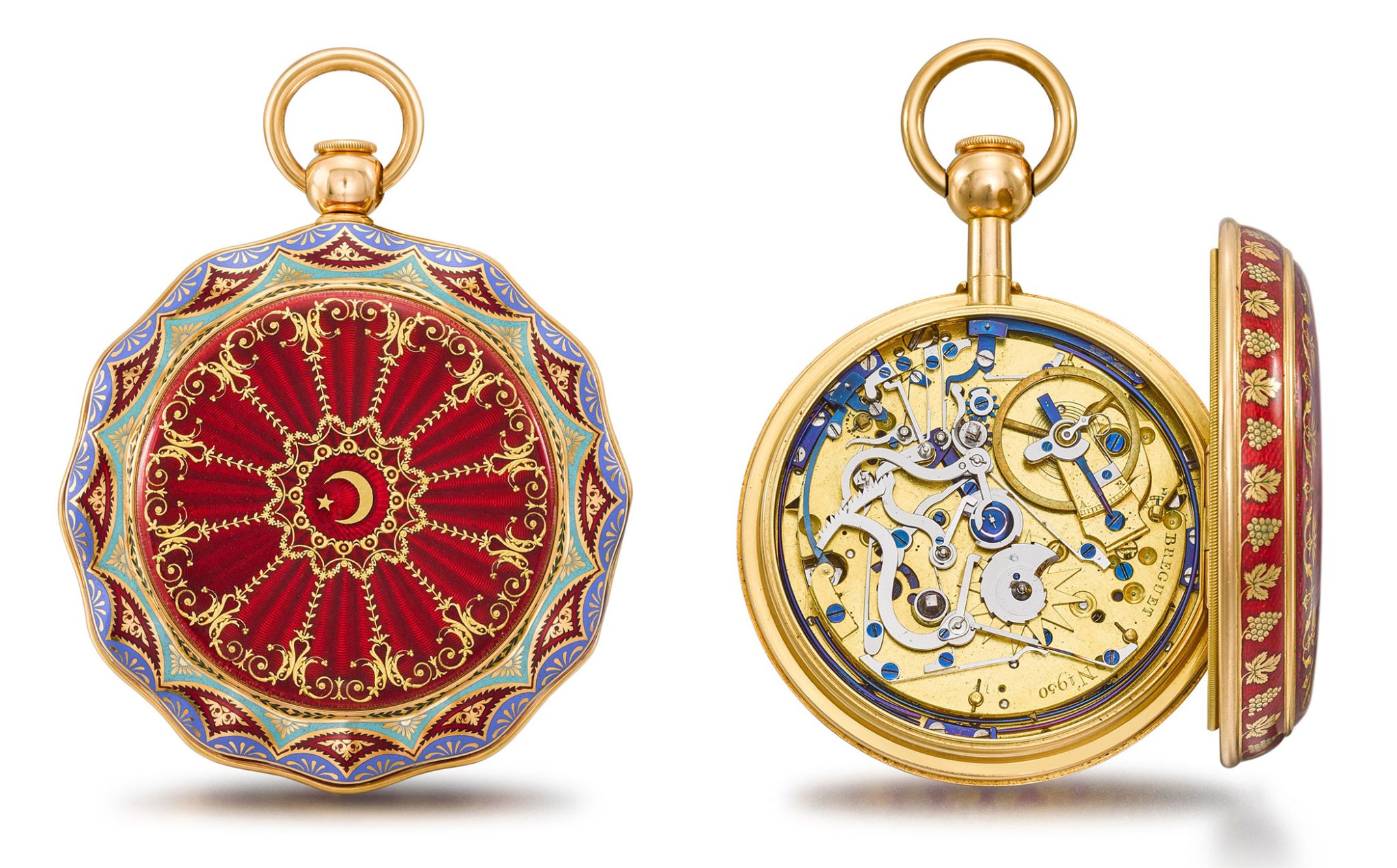
A recently auctioned striking mechanism pocket watch, created by master watchmaker Breguet.
Credit © Sotheby’s
Following the First World War, mechanical wristwatches enjoyed their heyday, bearing fruit to some of the most iconic models in watchmaking history. And today? The majority of the world’s population rely on a quartz watch or their iPhone. Fortunately, however, there are those out there who still appreciate the beauty of mechanics, resulting in a tight-knit watch community that spans across the globe. There are also those who still appreciate la dolce vita, leaving the chaos of everyday modern life behind in favour of savouring an espresso in the sun.
Nespresso and Hublot unite
Fortunately, it seems we old souls can still find middle ground between the old and the new. Swiss horology house Hublot and Swiss coffee capsule producer Nespresso both combine the traditional with the modern in their own special way. While Hublot fuses tradition and innovation by offering mechanical watches using boundary-pushing materials, Nespresso embraces modernity by offering up stylish aluminium capsules and easy-to-use machines that nevertheless contain high quality roasted coffee, meticulously tasted and blended in-house in the quaint town of Vevey, close to Lausanne.
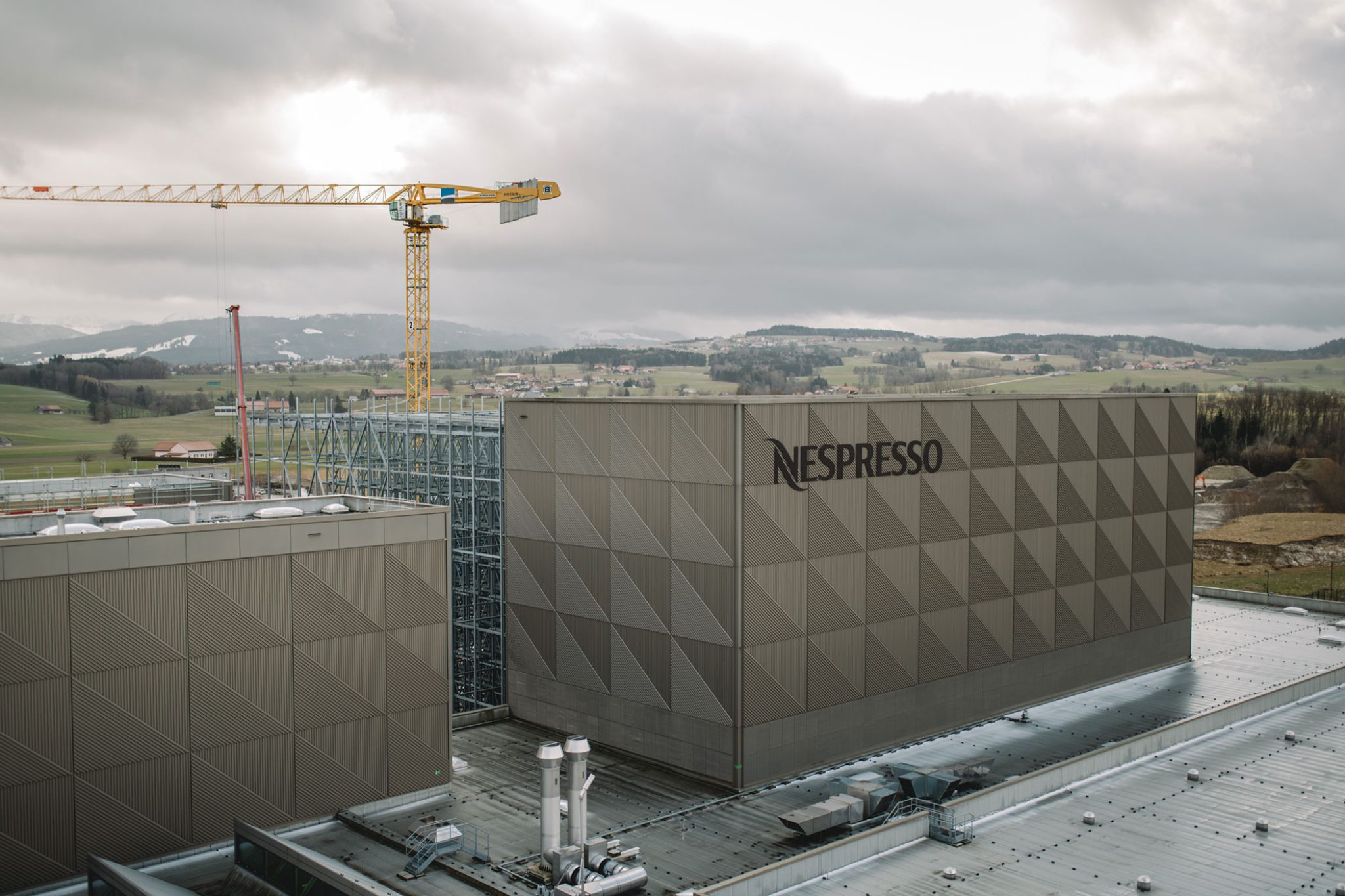
The Nespresso manufacture in Vevey, Switzerland
Credit © Nespresso
The Hublot Big Bang Unico Nespresso Origin
Last month, Hublot and Nespresso launched their first collaborative piece, the Hublot Big Bang Unico Nespresso Origin. The timepiece famously integrates the equivalent of four Nespresso capsules into its recycled aluminium case. Limited to 200 pieces, the watch features a skeletonised dial with varnished green details and matching green case. Satin-finished and polished, the green anodizing recycled aluminium case and crown, which proudly bears the Nespresso ‘N’, is like no other luxury timepiece on the market.
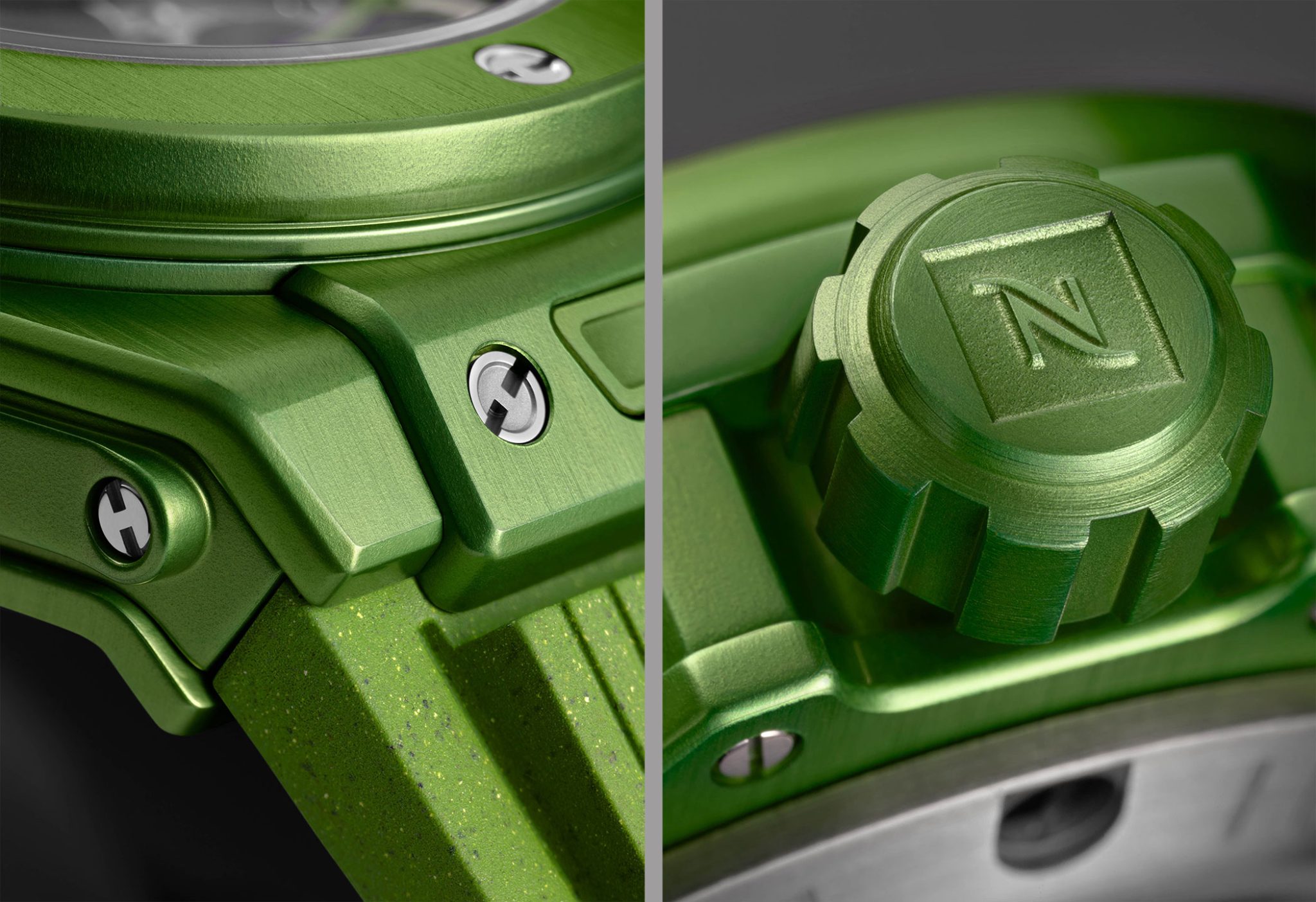
Beauty in the details: Hublot’s Big Bang Unico Nespresso Origin
While the timepiece savvily jumps on the vibrant green watch trend – think of the popular Oris ‘Kermit’ release melting hearts at Watches & Wonders 2023 – the material, impressively similar in texture and shine to a Nespresso capsule, absolutely holds its own. With a 42 mm x 14.5 mm Big Bang Unico case with a water-resistance of 100 m, this limited edition unapologetically stands out from the crowd.
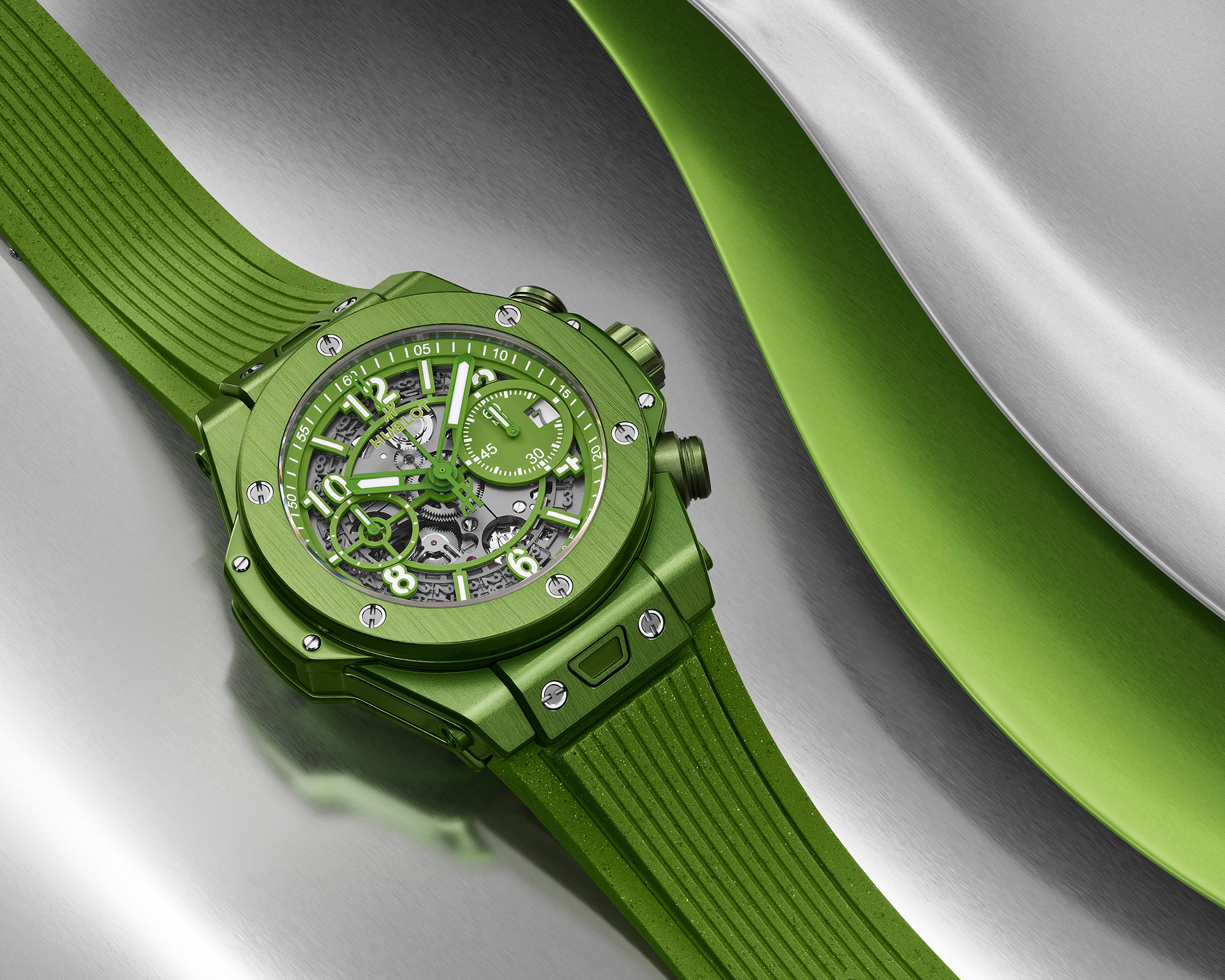
Powering the Big Bang Unico Nespresso Origin is the in-house HUB1280 UNICO calibre, a self-winding chronograph with a frequency of 4 Hz and power reserve of 72 hours. Also visible via the eco-titanium caseback, it’s a highly crafted and reliable movement, if not overly complex. Yet the partial skeletonisation combined with green hands and indices, both of which are filled with Super-LumiNova, create a sophisticated and highly technical aesthetic. The satin-finished and polished bezel with hallmark exposed screws is also particular highlight – who knew aluminium could look so good? Despite the exceedingly bright colour palettethat some might view as brash, a closer look reveals just how meticulously Hublot has executed this ground-breaking new edition.
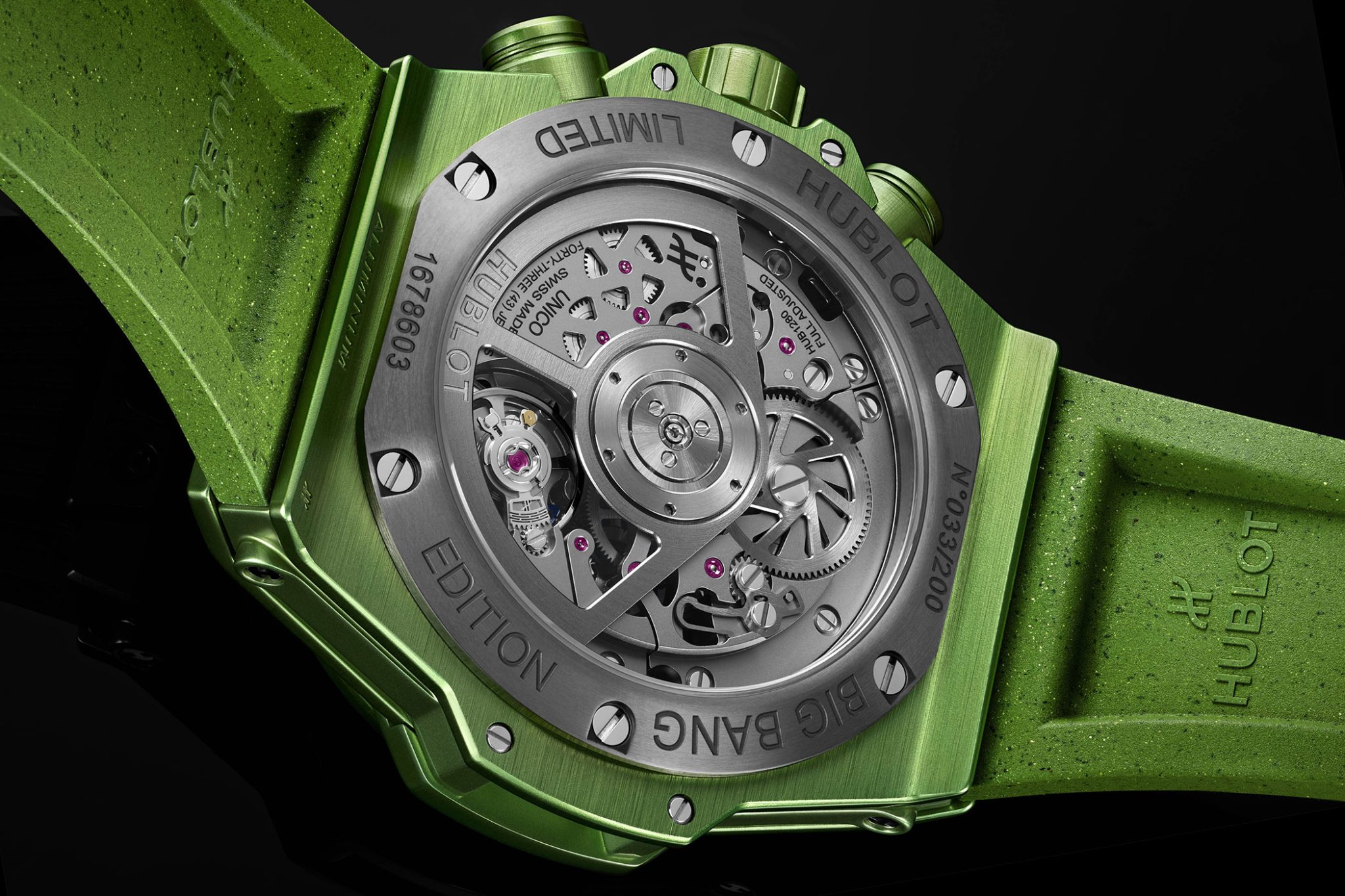
The Hublot Big Bang Unico Nespresso Origin comes with two strap options: either a green Velcro ‘S.café’ fabric strap, or an additional strap with green lined rubber with visibly integrated coffee grounds. It’s this additional strap that best suits the timepiece, with its highly contemporary spin.
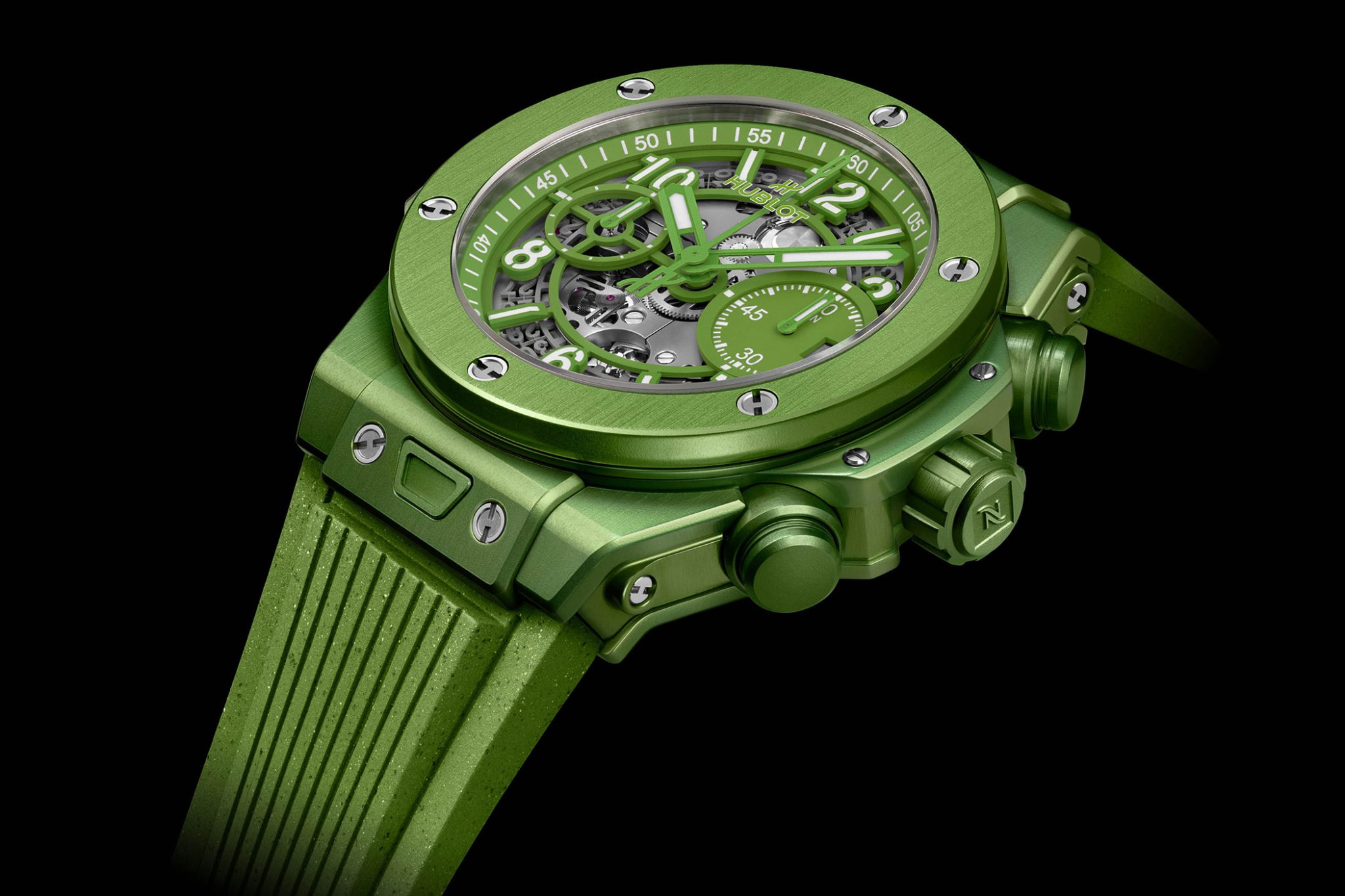
From composites and ceramics to new metal alloys, Hublot has long been known for its interest in material development. Recycled aluminium (including the equivalent of about four Nespresso capsules) in a watch case is certainly out of the ordinary. Despite the watch only being a year in development, the green colour was particularly challenging to conceive as green pigment doesn’t work well with light, meaning a special pigment needed to be developed. Equally out of the ordinary is the strap made of coffee granules, created with the help of a supplier in Austria called Kobleder – which, by the way, quietly counts the likes of Yves Saint-Laurent amongst its clientele.
Two companies, two CEOs: In conversation with the maestros
It’s impossible to ignore the fact that the Hublot Big Bang Unico Nespresso Origin has ignited much discussion online. While some are enamoured with this vibrant limited edition, others question the value of a 25,200-euro product created between two brands from seemingly very different worlds. That’s why we sat down with the respective CEOs from Hublot and Nespresso, Ricardo Guadalupe and Guillaume Le Cunff, to hear why they have such faith in this unusual collaboration.
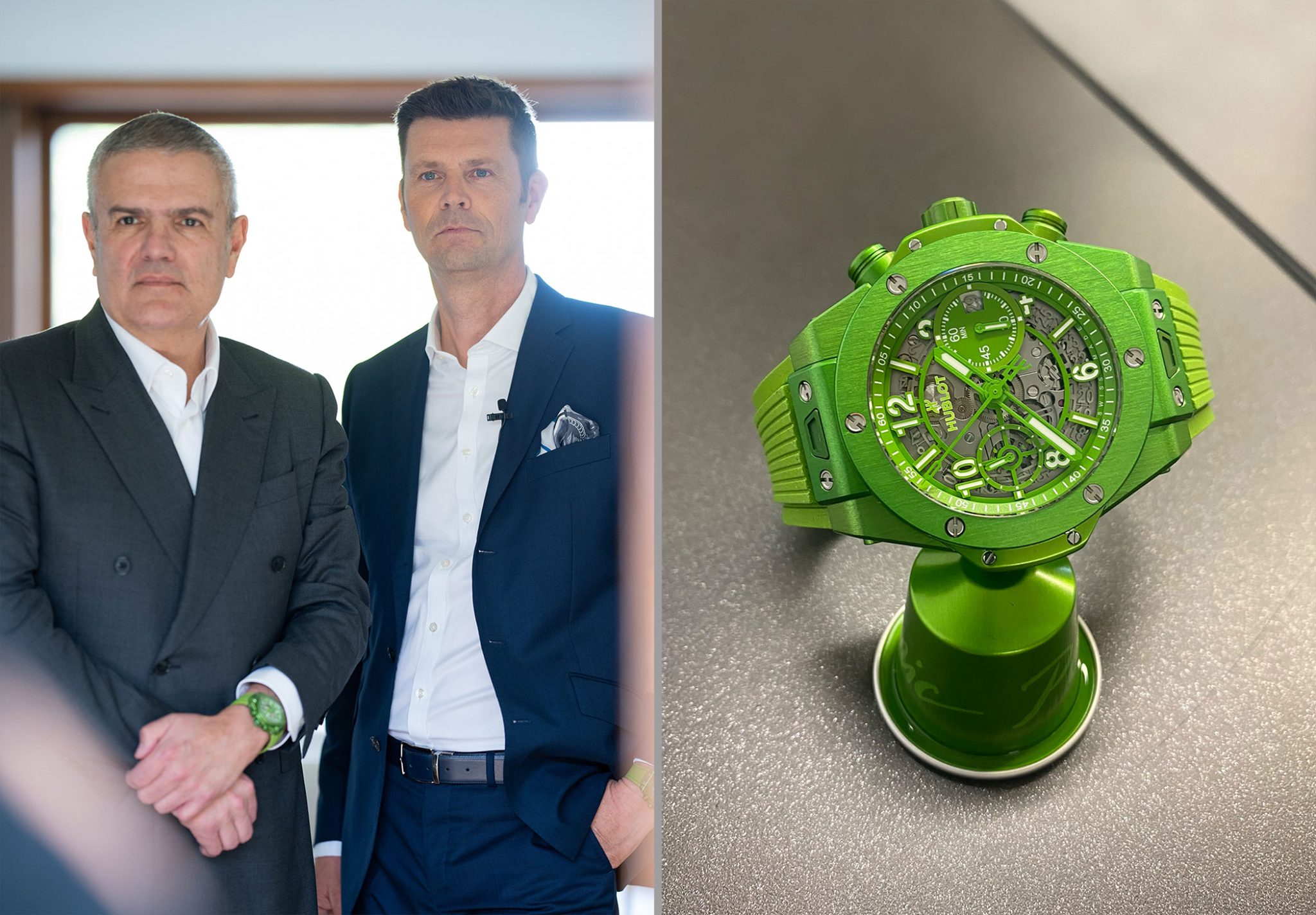
Hublot CEO Ricardo Guadalupe [left] and Nespresso CEO Guillaume Le Cunff [right]
Credit © Nespresso
For this limited edition of 200 pieces, Hublot opted for its most iconic line of all: the Big Bang. ‘Since its creation in 2005, the Big Bang has revolutionised our brand,’ says CEO of Hublot, Ricardo Guadalupe. ‘In fact, I’d say the watch revolutionised the watch industry. We were a small brand back then, but nevertheless created our own chronograph movement (the UNICO) as well as going on to create our own materials.’ And how about the colour? Why did Nespresso and Hublot opt for this almost divisively vivid green? ‘The colour of the watch takes its inspiration from the famous Nespresso capsule called the Master Origin Peru,’ explains Le Cunff (Nespresso’s spirited CEO, whose key to success is five Nespresso’s per day). ‘By using this green tone, we are paying tribute to nature, to the organic farmers from Peru – and offering an astonishing colour to match with an equally astonishing, disruptive upcycled watch.’
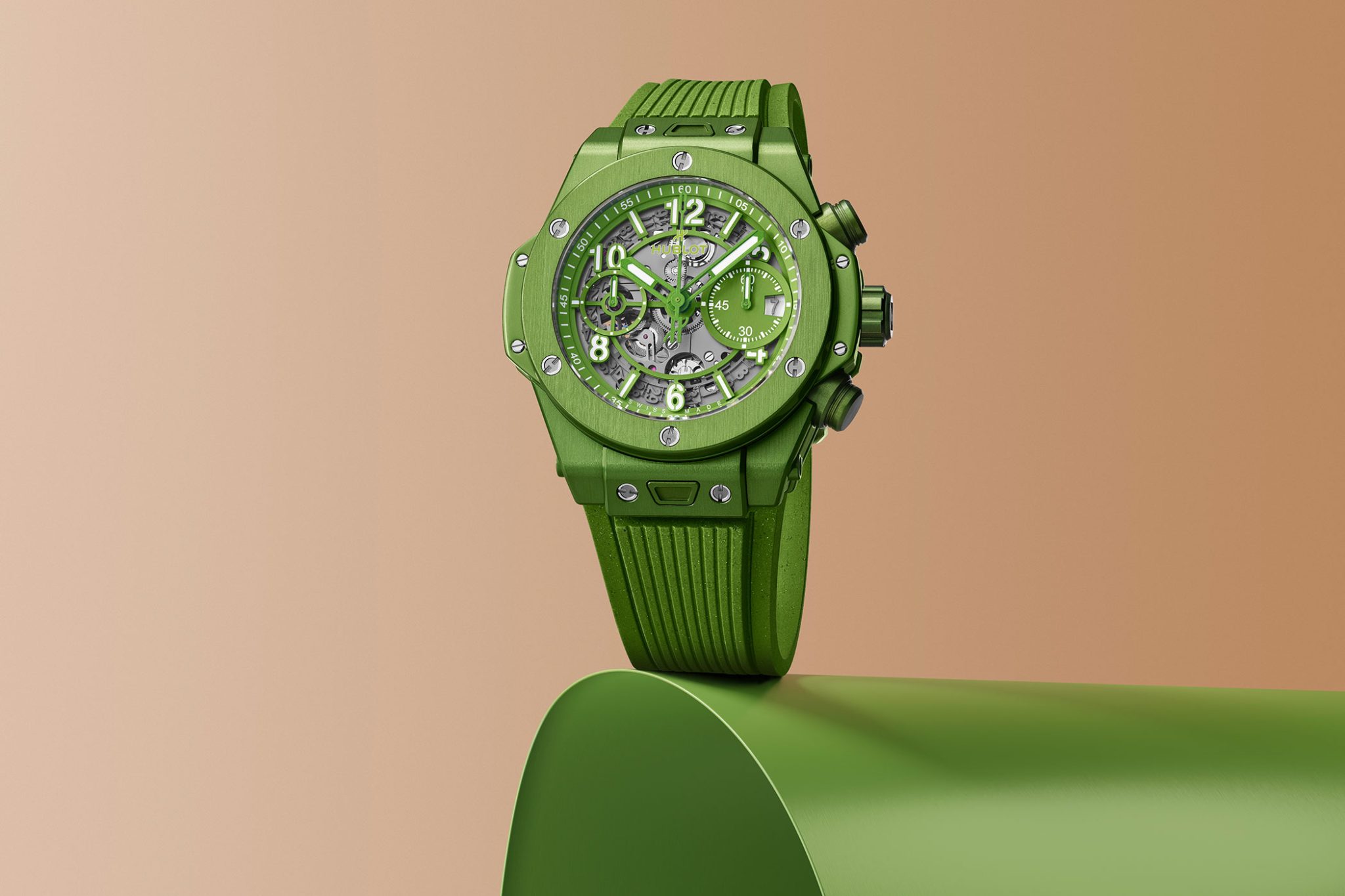
This raises an interesting point, and one that I am keen to put to Guadalupe: this may be a luxury timepiece, but it’s also a ‘second life’ product. How are customers embracing this kind of watch? ‘We believe that consumers are evolving in their taste,’ is his reply. ‘It’s even what they expect of luxury brands. When they see what we are doing for the protection of the planet, I think they are really touched. We also want to acquire new customers this way. Furthermore, the whole idea behind ‘the art of fusion’ is that two extremes – e.g. recycled materials and technology – can come together. I think it all fits together very well.’
Even the wooden box in which the watch is presented is recycled, adds Guadalupe with pride. ‘For every oak tree that is cut down to create this box, another tree is planted. This is really the correct way to manage things, as young forests are in fact more effective at eliminating carbon from the atmosphere than older forests.’ This box, currently only housing the Hublot Big Bang Unico Nespresso Origin, is planned to be used for Hublot’s future watch models across various collections, too.
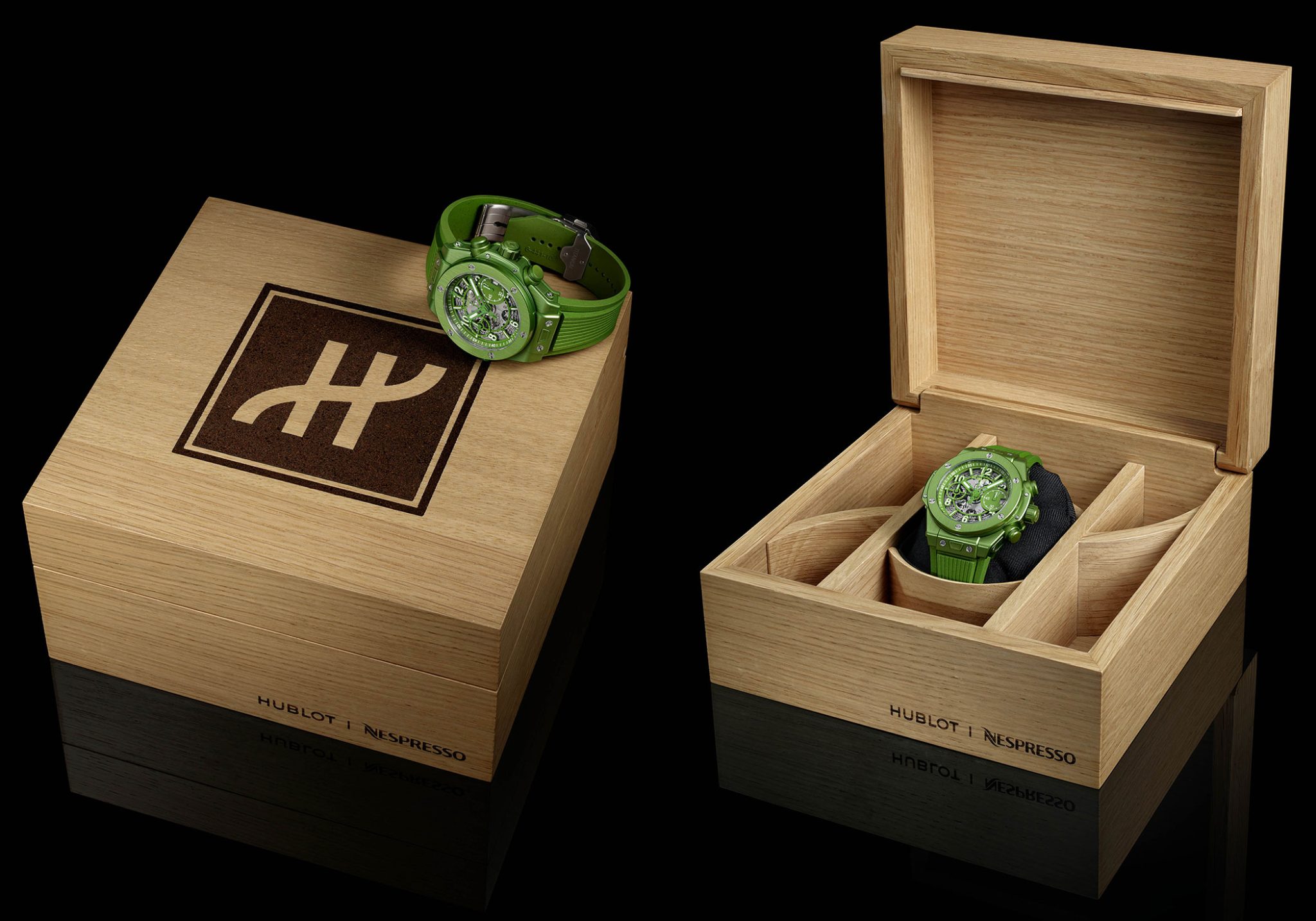
Sustainability is taking increasing precedence at Hublot’s manufacture. Soon to start work on a brand-new building, the space will aim to be almost 100 percent energy efficient, while employees’ cars will be concealed beneath a biological green park with 300 trees. Even now, the company immerses itself in nature with bee-friendly planting as well as its own hives (I can personally recommend the honey). It’s clear that Hublot cares about wellbeing in general, from the nature surrounding the manufacture to its very own crèche, where employees’ toddlers discover gardening and art, while their parents nurture their own horological passion upstairs.
Swiss Made: Why the collaboration with Nespresso?
Time for the question on everyone’s lips: why collaborate? ‘Nespresso contacted us with the intent of doing a campaign that would draw the parallels between their coffee and an incredible product with a lot of added value: a watch,’ says Guadalupe. ‘At the end of the day, we share a lot of the same values. We are both Swiss brands, so having a sense of ‘Swissness’ is important for us; we produce all of our watches here. To our surprise, we discovered that Nespresso, too, produces all of its capsules here in Switzerland.’ It’s unusual to hear of a collaboration forming due to a shared nationality; but it is quite a beautiful reason. After all, ‘Swiss Made’ holds pride of place in the luxury watch world. Also, after several days roaming the lush green valleys and pebbled waterfronts of Lake Geneva, it’s not difficult to understand why the Swiss hold their small country so dear.

Credit © Andreas M
‘Swissness’ also offers up another motive for the collaboration. ‘Innovation comprises an important part of Swissness, and it defines our work at Hublot’, continues Guadalupe. ‘Likewise, Nespresso really revolutionised the coffee industry with their invention back in the day. What’s more, the product they produce has an incredible quality, and the capsule – as well as the machine itself – are both pretty innovative and technical. As is the case at Hublot, Nespresso also takes a great interest in precision, in order to create the perfect coffee. There are some real shared values at play: the art of fusion; innovation; Swissness.’ Le Cunff chimes in: ‘Creating one capsule of coffee actually involves a lot of technology. We need the right aluminium, the perfect pressure, and of course a machine that can provide the right amount of water and the perfect temperature.’
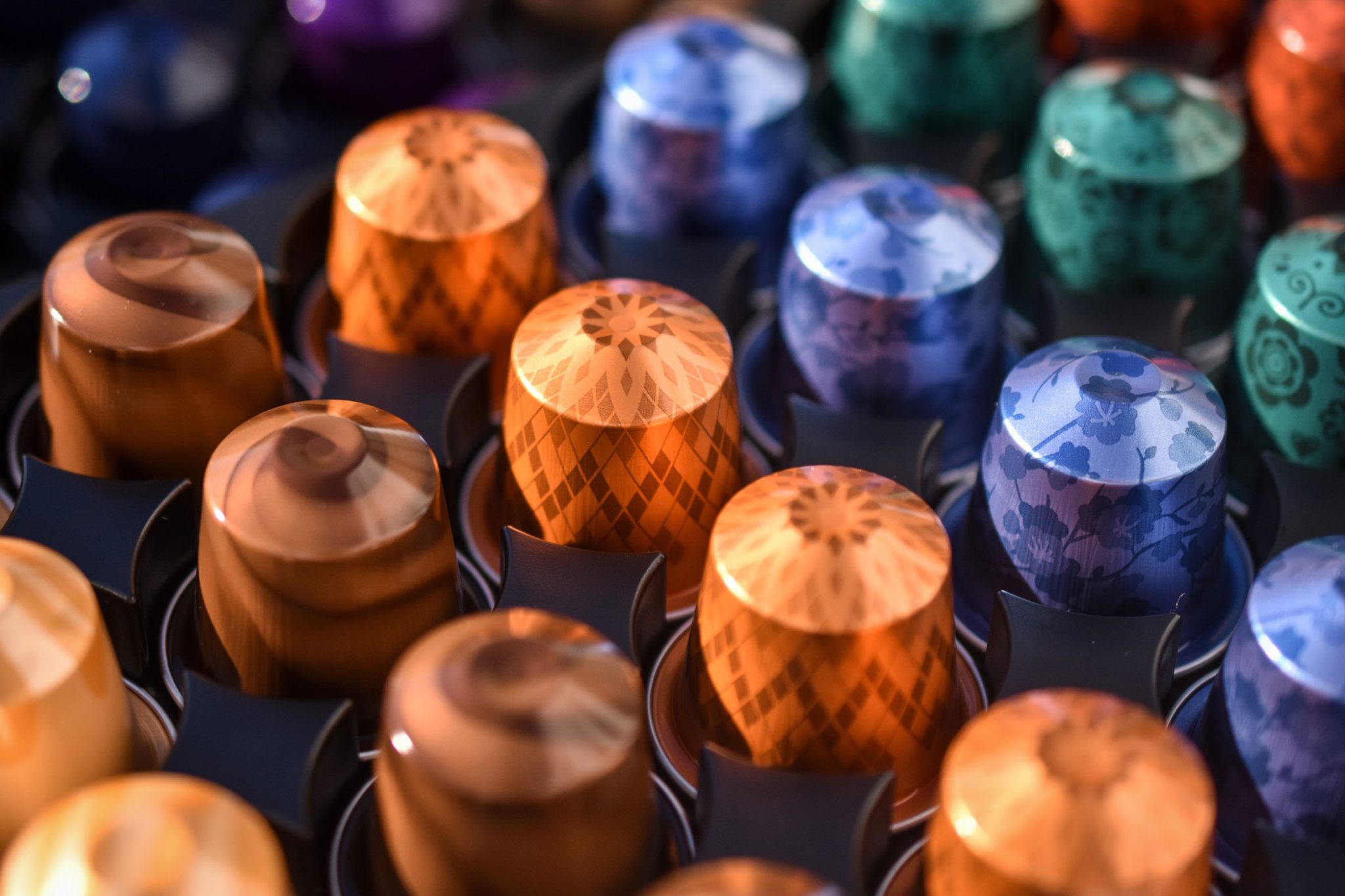
Credit © Jesper Brouwers
An upcycled watch – a step in the right direction?
It’s important to mention that part of the motivation behind the Nespresso x Hublot watch was to convey both parties’ dedication to sustainability. The Hublot Big Bang Unico Nespresso Origin is a part of Nespresso’s ‘Second Life’ scheme, which aims to create a new story through collaborations: in this case, the use of recycled capsules in a watch.
Nevertheless, when the majority of us think about Nespresso, the ‘sustainable’ might not be the first word to spring to mind. Countless aluminium coffee capsules are thrown away every day. While in Switzerland, the country’s conscientious consumers recycle an impressive average of around 70 percent of capsules, the worldwide average of people recycling Nespresso capsules stands at only around 28 percent. Switzerland is able to reach this impressive statistic due to its waste management infrastructure. The country has no landfills, alternatively laying a focus on energy efficient systems. While Switzerland has ‘only’ 23 Nespresso boutiques, it has an impressive 3,700 capsule recycling points.

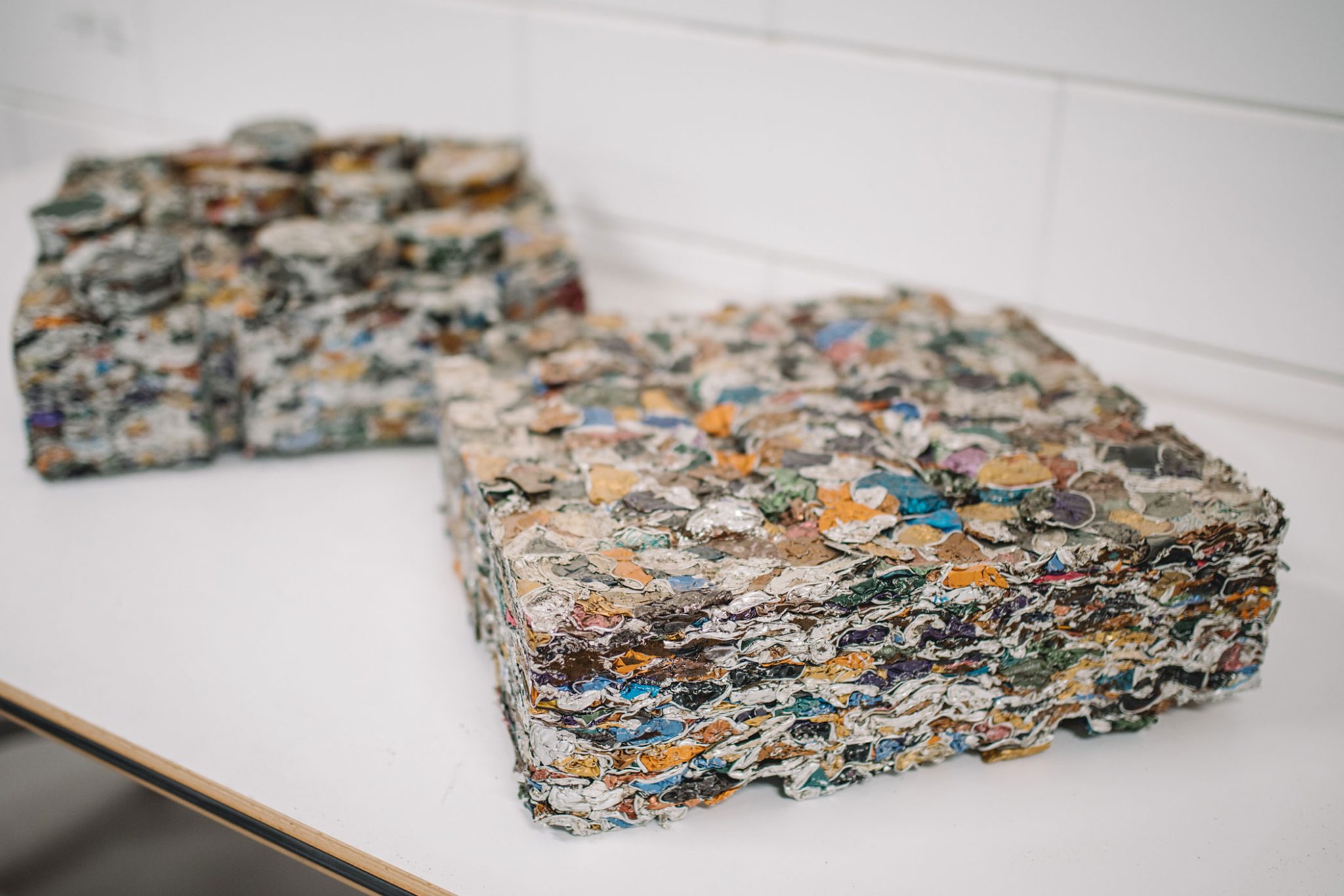
Tightly packed Nespresso capsules at the company’s manufacture in Vevey, Switzerland
Credit © Nespresso
So how is Nespresso working to become more sustainable, given it cannot control each country’s waste management infrastructure? Nespresso has invested 300 million CHF into sustainability over the past few years; there must be something to show for it. One key point within production, explains the company’s Technical and Quality Manager for Nespresso Switzerland, Simon Gigandet, is efficient use of energy.

Initially grown as red berries, the coffee beans within are green prior to roasting
Credit © Katya Ross
Nespresso roasts no less than three tonnes of coffee per hour, with each roasting session taking between five and 16 minutes. The process is vital for the coffee beans, which arrive by the trainload as green beans before being roasted to reveal the aromas, acidity, bitterness, and taste. With 450 kg of beans per batch spinning through the air, the roasting requires an average temperature of 240 degrees Celsius. Therefore, Nespresso compensate by preheating machinery to save energy, alongside sourcing their energy from solar panels as well as rain water in the vicinity.
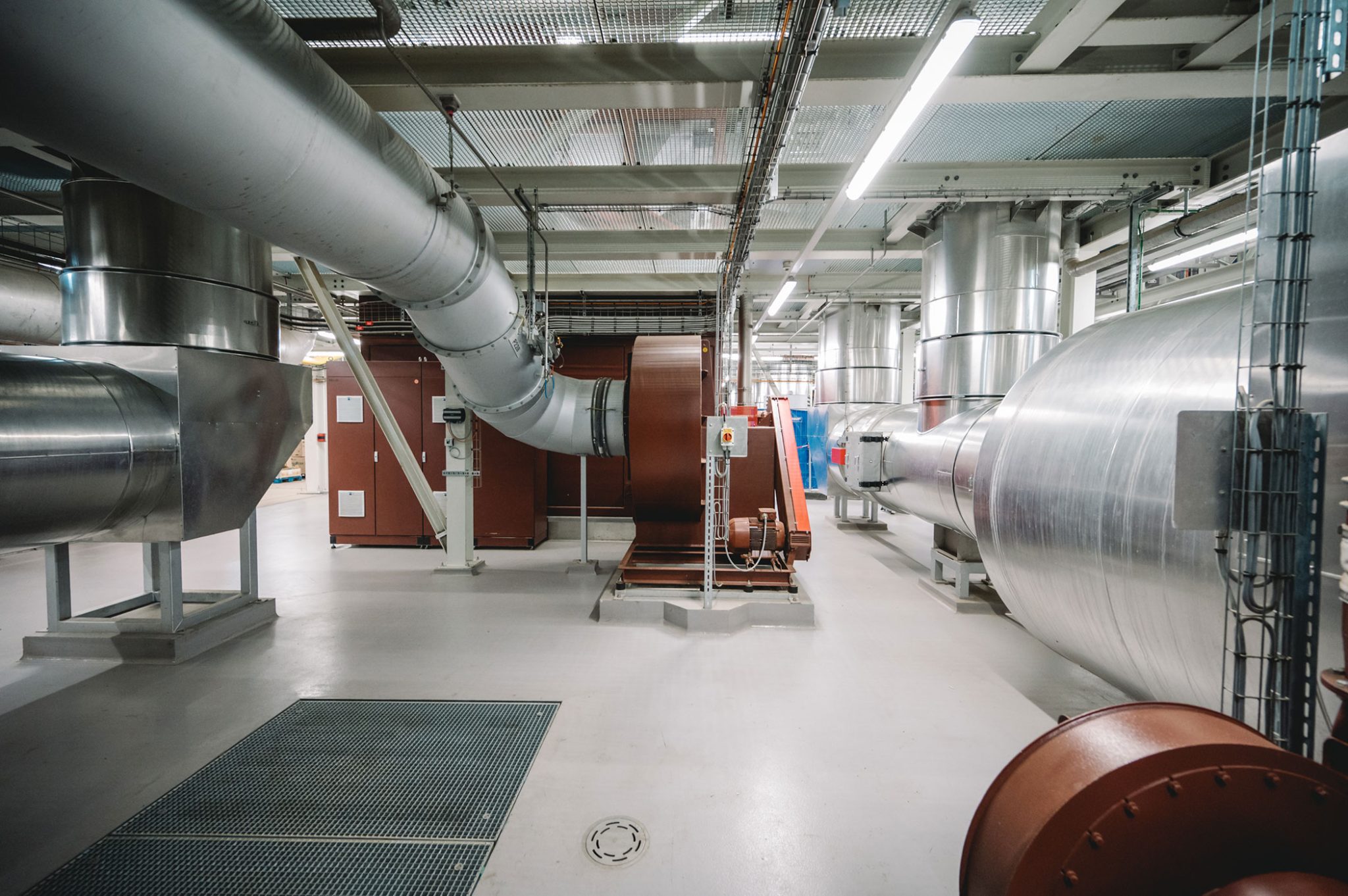
Nespresso preheats its machinery to retain energy.
Credit © Nespresso
Indeed, it’s evident that Nespresso has come a long way since the introduction of its first capsules back in 1986. These days – since 2016, to be precise – the company capitalises upon efficiency, using a complex robot system to carry out much of the work. As a result, only a handful of workers can be found on the Nespresso manufacture’s sparse packing floor.
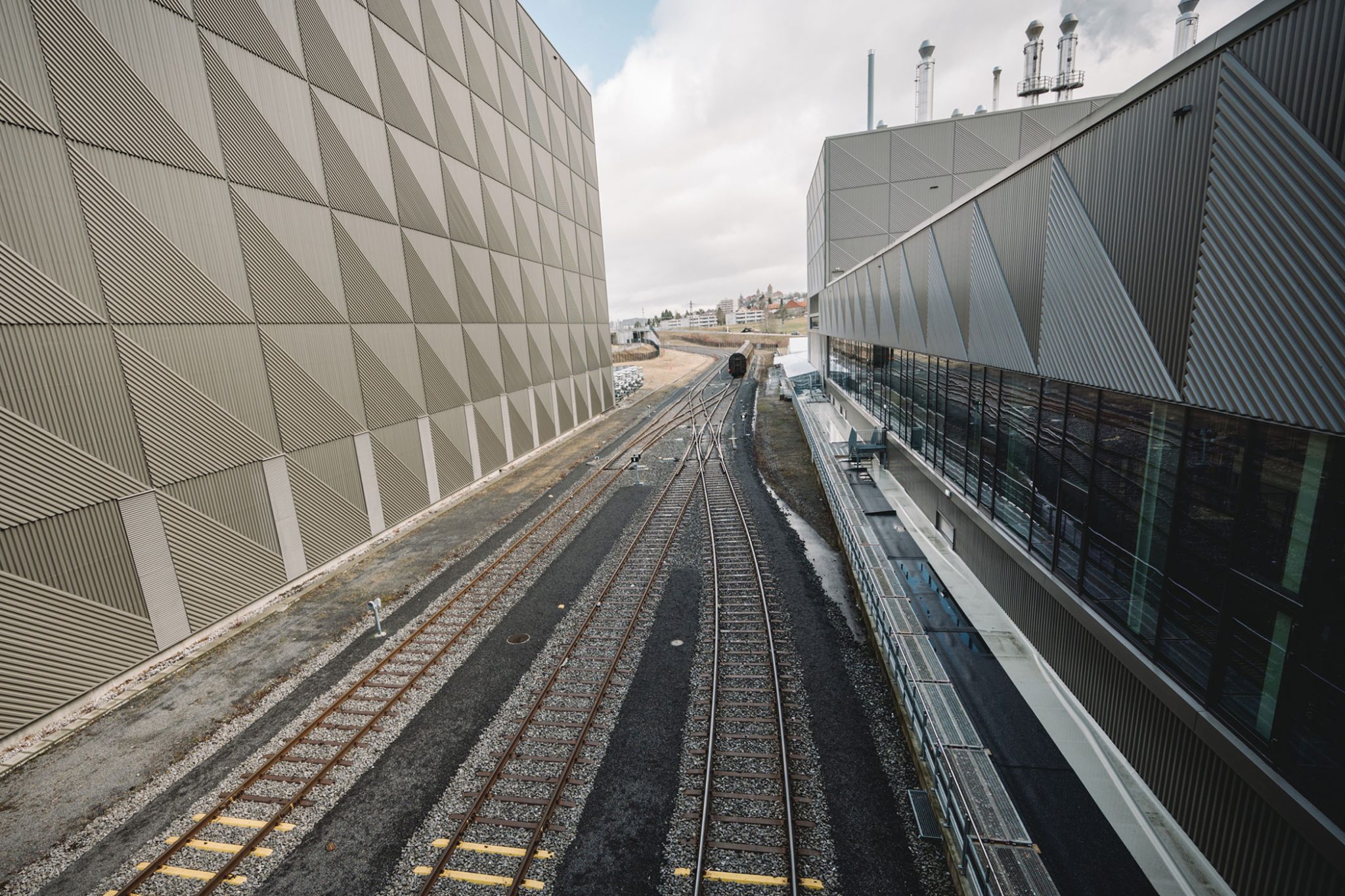
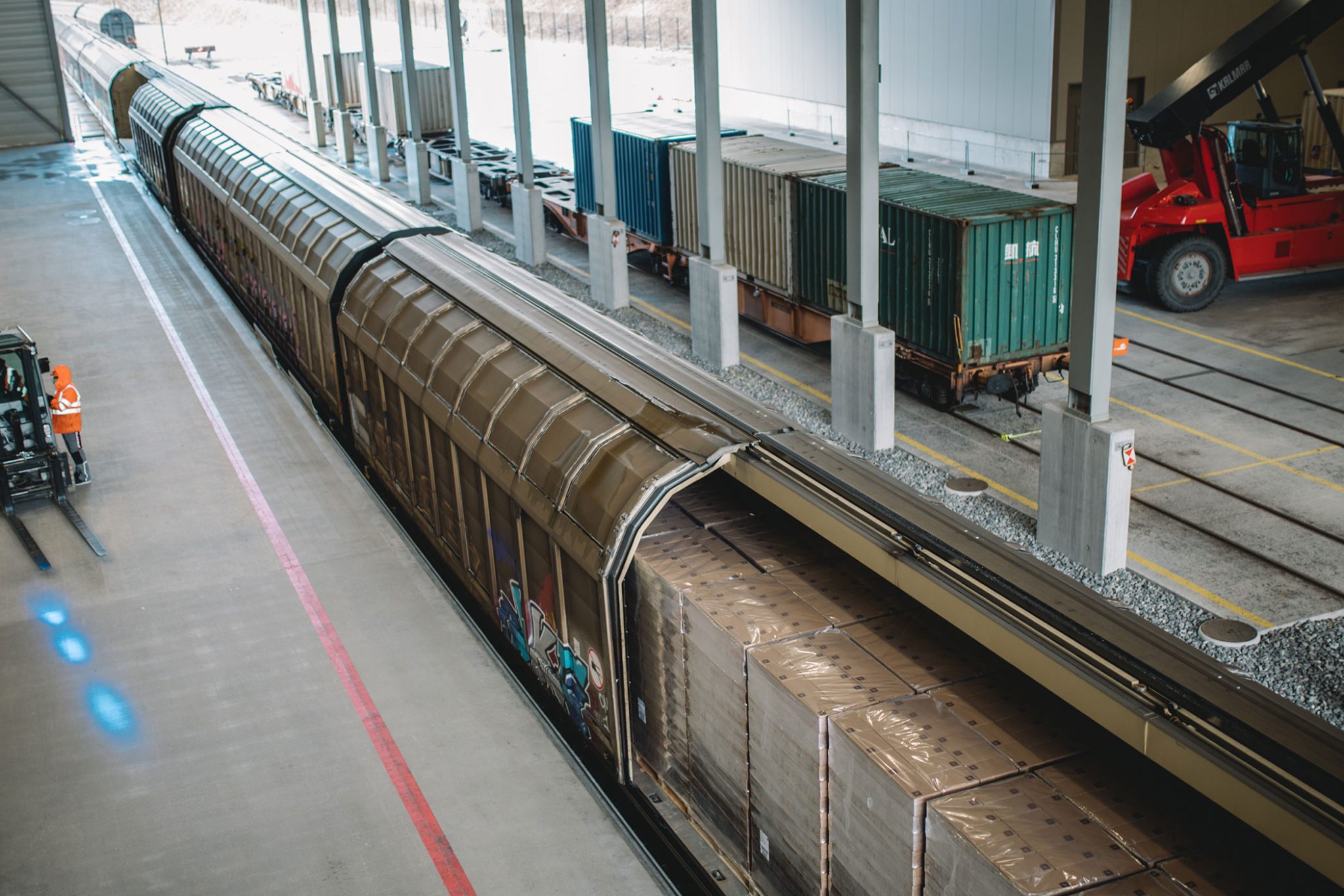
Nespresso is home to its own station, where beans arrive by the sack-load from around the world.
Credit © Nespresso.
Traceability is another important factor: the company ensures that it can trace all of its product back to the original farmer, with the majority of the beans being meticulously picked by hand. This helps to avoid excess waste; in fact, only two percent of coffee tested by Nespresso’s experts, after being roasted to the international standard, fails to make the cut. Last but not least, the coffee beans sacks are eventually reused for insulation inside walls.
The verdict
As my journey comes to a close, I ponder over my daily (fine, hourly) cappuccino: what’s the verdict on the Hublot Big Bang Unico Nespresso Origin? As with all good things, the watch is a hot topic of discussion. But let’s see this piece for what it is: a limited edition. It isn’t supposed to be a watch for everyone – nor does it try to be. Rather, the watch can be interpreted as a shared statement that represents a proud sense of Swissness, inspiration for future sustainable luxury products, and collective values.
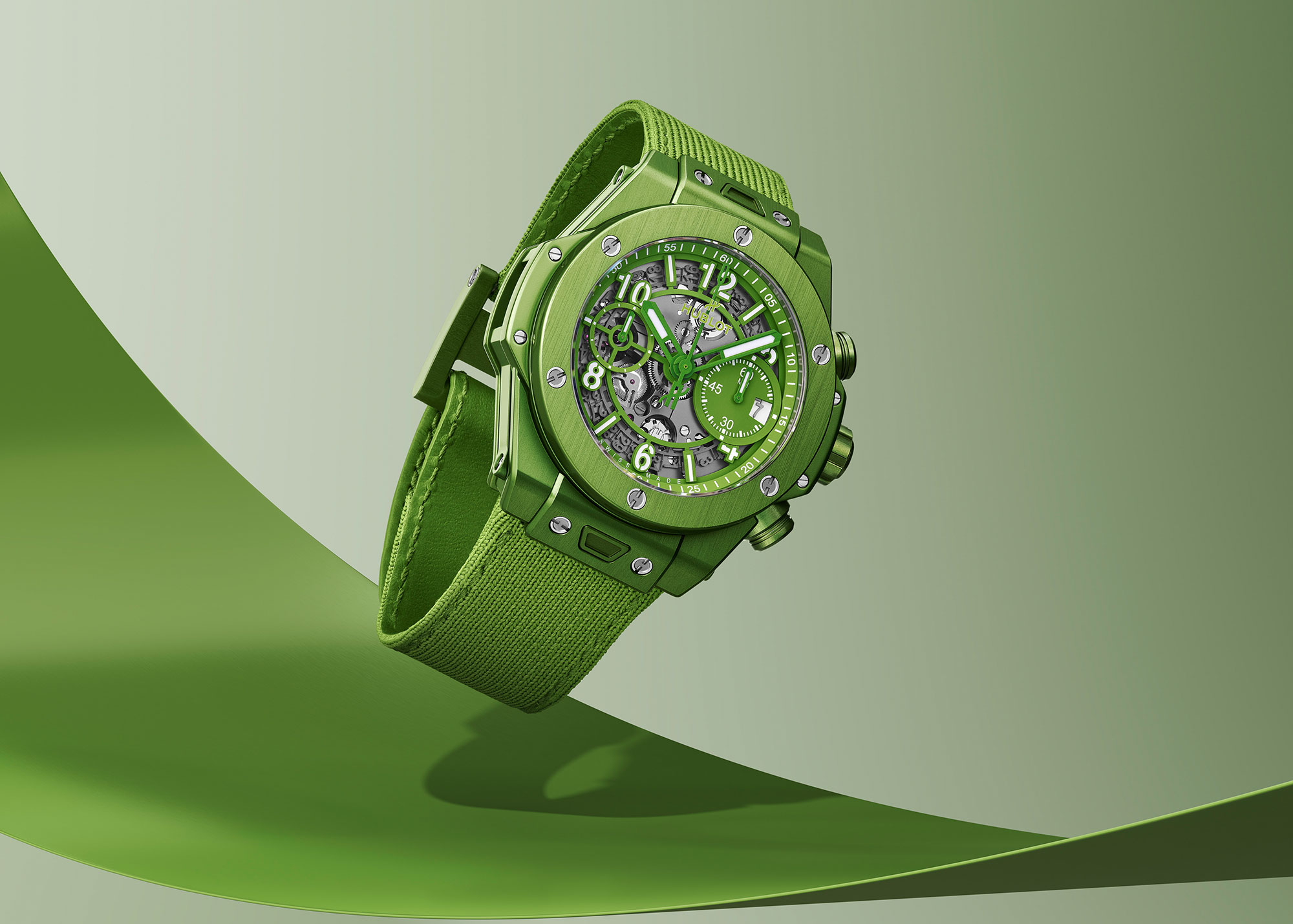
As was the case with Panerai’s Submersible eLAB-ID watch, which was 98.6 percent recycled, people do look for justification of price in ‘second life’ products. They’re a new phenomenon, and the luxury segment is surely destined to be one of the hardest segments to break into. My personal hope is that a rainbow of new Nespresso-capsule colour Big Bang Unicos will follow behind this first show-stopping model, leading to a greater appreciation of what could prove to be a stunningly different luxury watch collection from Hublot. After my short Swiss adventure with the Big Bang Unico Nespresso Origin, I can certainly taste the difference.


